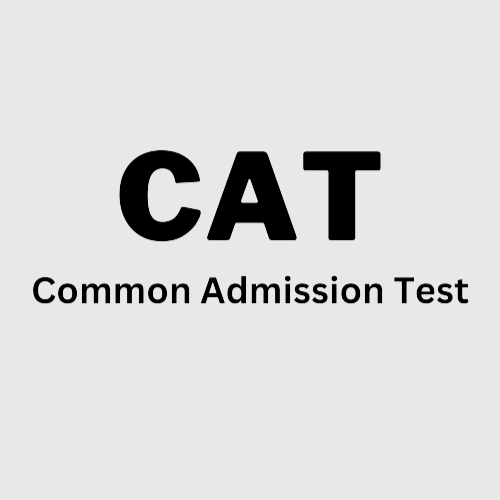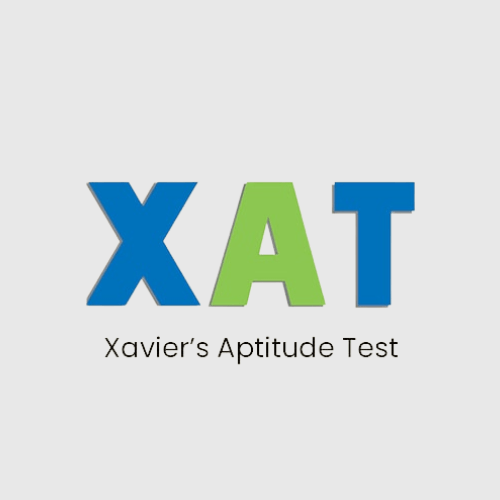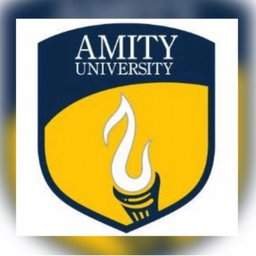Table of Contents
ATMA Syllabus
The ATMA syllabus 2023 provides an outline of the section-wise subjects that test takers are expected to be familiar with. The topics that are expected to be covered in the Analytical Reasoning, Verbal Skills, and Quantitative Skills portions of the ATMA 2023 syllabus are of a high school and graduate level. The application period for the ATMA 2023 exam started on December 24, 2022, and the exam itself is scheduled to take place on February 25, 2023. Please read on to learn more about the course outline for ATMA 2023. Shiksha provides you with the essential subjects and sub-subjects that are likely to be tested in the ATMA 2023 examination.
ATMA Syllabus 2023 – Overview
You can gain an overview of the ATMA syllabus by reading the following:
- The question paper for ATMA is developed using the syllabus as its guide.
- The exam board, known as AIMS, will not make the ATMA curriculum available to the public.
- The curriculum is the same for all of the different sessions of the ATMA exam (February, May, June, July, and December)
- The questions are designed to evaluate a candidate’s capability in a variety of managerial abilities.
Highlights of the ATMA Syllabus for 2023
Take a look at some of the subjects that are considered to be the most vital ones within the ATMA syllabus in six different parts. The ATMA 2023 exam places a greater emphasis on certain categories of material. Check out the following table to learn about the most important aspects of the ATMA syllabus:
| Section | Important Topics |
|---|---|
| Analytical Reasoning | Linear Arrangements, Number Series, Circular Arrangements, Blood Relationship Tests, Family Trees, etc. |
| Verbal Skills | Reading Comprehension, Grammar, English Usage Errors, Para jumbles, etc. |
| Quantitative Skills | Algebra, Time-Speed-Distance, Geometry, Graph, Quadratic and Linear Equations, Number Systems, etc. |
The Topics and Sub-Topics of the ATMA Syllabus for 2023
The purpose of the ATMA test is to evaluate a candidate’s capability in a variety of management abilities. As a consequence of this, the questions on the test have been constructed in a manner that necessitates strong analytical and logical thinking capabilities, as well as verbal and numerical aptitude. Even the ATMA curriculum is constructed along the same lines as this model. Candidates can check out the section-by-section syllabus for the ATMA 2023 exam below:
Analytical Reasoning Lessons for the ATMA 2023 Course Syllabus
The questions contained within the Analytical Reasoning sections evaluate the student’s capacity to draw conclusions based on information presented in a sequence of events. The following is a list of the significant subjects that will be covered in the Analytical Reasoning sections:
Important Topics for Analytical Reasoning
| Critical Reasoning | Coding-decoding | Syllogism |
| Course of Action | Arguments | Data Sufficiency |
| Arrangements | Strong/Weak Argument | Statements & conclusions |
| Statement-Inference |
ATMA 2023 Syllabus for Verbal Skills
The student’s linguistic capability is evaluated using the student’s knowledge of grammar and vocabulary in the Verbal Skills portion of the ATMA 2023 exam question paper. The following is a list of the significant subjects that are covered in this section:
Important Topics for Verbal Skills
| Grammar | Vocabulary | Para Jumbles |
| Reading Comprehension | Sentence Completion | Word Meaning |
The Quantitative Skills Syllabus for the ATMA 2023 Exam
Mathematical prowess is evaluated in this stage of the application process. The following are some of the significant themes covered in this section:
Important Topics for Quantitative Skills
| Number system | Time, Speed, and Distance | Profit and loss |
| Mensuration | Algebra | Modern Math |
| Geometry | Arithmetic | Average |
| Permutation & Combination | Logarithm | Quadratic Equation |
| Percentage | Ration & Proportion |
The Topic-wise Question Distribution and the Level of Difficulty for the ATMA Syllabus 2023
It has been observed that the overall difficulty level of the ATMA exam was moderate throughout the past few years. The exam is administered by the ATMA. The level of difficulty of the questions that were asked throughout each portion was also moderate. The categories of content from which questions were drawn for the examination of the year before, along with an indication of the degree of difficulty each issue presented and the relative importance it carried, are detailed below.
Reasoning Through Analysis
Have a look at the table that follows to get an idea of the significant aspects covered in the Analytical Reasoning portion, as well as the number of questions and the degree of difficulty.
| Topics | Number of questions | Difficulty level |
|---|---|---|
| Critical Reasoning | 6 | Moderate-Difficult |
| Syllogisms | 6 | Moderate-Difficult |
| Course of Action | 3 | Easy |
| Statement Cause-Effect | 6 | Moderate |
| Statement-Conclusion | 1 | Easy |
| Strengthen/Weaken | 6 | Moderate |
| Strong/Weak Arguments | 1 | Moderate-Difficult |
| Statement-Inference | 5 | Moderate |
| Course of action | 2 | Easy |
| Arrangements | 10 | Moderate-Difficult |
| Data Sufficiency | 8 | Moderate |
| Coding decoding | 6 | Easy-Moderate |
Quantitative Skills
Have a look at the table that follows to get an idea of the significant subjects covered in the Quantitative Skills portion, as well as the number of questions and the degree of difficulty.
| Topics | Number of questions | Difficulty level |
|---|---|---|
| Numbers | 11 | Easy |
| Arithmetic | 9 | Easy-Moderate |
| Algebra | 5 | Moderate-Difficult |
| Modern Math | 12 | Easy-Moderate |
| Geometry | 8 | Easy-Moderate |
| Data Interpretation | 15 | Moderate |
Verbal Skills
Have a look at the table that follows to get an idea of the significant aspects covered in the Verbal Skills portion, as well as the number of questions and the degree of difficulty.
| Topics | Number of questions | Difficulty level |
|---|---|---|
| Jumbled Paragraph | 6 | Easy-Moderate |
| Sentence not contributing to Main Idea | 1 | Easy |
| Sentence starters | 2 | Moderate |
| Antonym-Synonym pairs | 3 | Moderate |
| RC ( 5 passages) | 30 | Easy-Moderate |
| Fill in the blanks | 6 | Easy-Moderate |
| Close | 4 | Moderate |
| Correct Statement | 1 | Easy |
| Part of the sentence with an error | 4 | Easy |
| Incorrect word/phrase | 3 | Easy |
Read more
- Exam Date
- Application Form
- Admit card
- Exam Centers
- Exam pattern
- Syllabus
- Result
- Counselling
- Book
- Previous Year Question Paper
- Mock Test
- Answer Key
- Paper Analysis
- cutoff
- Preparation
Frequently Asked Questions About ATMA Syllabus 2023
Q. How many different topics will be on the ATMA exam?
Ans. The question paper for the ATMA exam is broken up into six sections. In order for students to do well on the test, they need to study material that pertains to Analytical Reasoning, Quantitative Skills, and Verbal Skills. As a result, the questions for the ATMA examination are drawn from one of three primary categories of content.
Q. What are some of the greatest books to read in order to prepare for the Analytical Reasoning section?
Ans. Students who want to do well in the Analytical Reasoning section should consult books like “How to prepare for Logical Reasoning for CAT” by Arun Sharma, “A Modern Approach to Verbal Reasoning” by RS Aggarwal, “Logical and Analytical Reasoning” by K Gupta, and so on. These and other similar titles can help them succeed.
Q. Where can I find the ATMA exam’s rubric and scoring guide?
Ans. The applicant will be awarded one mark for every correct answer, and 0.25 marks will be deducted for every erroneous response.
Q. Is the ATMA syllabus similar to the CAT syllabus?
Ans. The content of the ATMA curriculum is comparable to that of the CAT in that it also includes sections on quantitative ability, verbal ability, and analytical reasoning. However, the complexity of the ATMA exam is significantly lower than that of the CAT.
Q. When it comes to the Quantitative Skills component of the exam, which topic do you think has the most questions?
Ans. The Data Interpretation (DI) section will feature the most questions and will also carry the most weight in terms of total points.
Q. Does the ATMA exam have sectional time for the questions?
Ans. The ATMA exam does, in fact, have sectional timings. Each section will be given a total of thirty minutes to be solved.
Q. Who decides what should be on the ATMA curriculum?
Ans. No, AIMS does not have any input into the ATMA exam’s curriculum in any way. The ATMA exam’s historical patterns served as the basis for the creation of the syllabus.
Q. What are the most helpful books for getting ready for the Analytical Reasoning component of the ATMA exam?
Ans. The books “A Modern Approach to Logical Reasoning” by RS Agarwal, “Logical and Analytical Ability” by Ashok Gupta, and “How to Prepare for Logical Reasoning for the CAT” by Arun Sharma are the finest ones to read in order to prepare for the Analytical Reasoning component of the CAT.
Q. Which of the following parts of the ATMA exam do you find to be the most challenging?
Ans. Historically speaking, the Quantitative Ability component of the ATMA exam is the one that students find to be the most challenging. On the other hand, success is directly proportional to your level of preparation and concentration.
Q. What are the finest books to read in order to get ready for the Verbal Ability component of the ATMA?
Ans. How to Prepare for Verbal Ability and Reading Comprehension for CAT by Arun Sharma and Meenakshi Upadhyaya and High School English Grammar and Composition Key by Wren and Martin are two of the greatest books to read in order to prepare for the Verbal Ability component of the ATMA.
Q. Can the books used for the CAT help me prepare for the ATMA?
Ans. In order to prepare for the ATMA exam, students can use the books that are recommended for the CAT; nevertheless, they are required to complete practice tests and sample questions that are unique to the ATMA.
Q. In the Quantitative Ability section of the ATMA, what are the most crucial topics to cover?
Ans. To ace this section of the ATMA exam, you should study topics such as number systems, numerical calculations, algebra, geometry, arithmetic equations, interpretation of tables, graphs, etc.





















